Welcome to Open Research Institute’s Inner Circle Newsletter for December 2024. We have a lot to share with you!
Open Research Institute is a non-profit dedicated to open source digital radio work. We do both technical and regulatory work. Our designs are intended for both space and terrestrial deployment. We’re all volunteer. You can get involved by visiting https://openresearch.institute/getting-started
Membership is free. All work is published to the general public at no cost. Our work can be reviewed and designs downloaded at https://github.com/OpenResearchInstitute
We equally value ethical behavior and over-the-air demonstrations of innovative and relevant open source solutions. We offer remotely accessible lab benches for microwave band radio hardware and software development. We host meetups and events at least once a week. Members come from around the world.
Read on for regulatory, technical, and social articles. We close with a calendar of recent and upcoming events.
Want to subscribe to the Inner Circle? Sign up at http://eepurl.com/h_hYzL
Previous issues of Inner Circle can be found at https://www.openresearch.institute/newsletter-subscription/

Regulatory Work at ORI
Making Open Source Easier for Everyone
Past regulatory work at ORI can be found at https://github.com/OpenResearchInstitute/documents/tree/master/Regulatory
219 MHz Project
by Mike McGinty
Federal Communications Commission License DB (FCC LicDB) is a set of tools for exploring the FCC license database dumps. The tools are at https://github.com/tarxvftech/fcc_licdb
These database dumps are at https://www.fcc.gov/wireless/data
What you see in FCC LicDB is a way to download and then import most of the weekly database dumps to an sqlite database. Expect a couple gigabytes for uls.db, depending on how many services you import.
After that, the purpose of this repository gets more esoteric because it’s less about exploring and more about answering. (Answering what?)
There’s a problem with the 219-220 MHz amateur band. 47 CFR part 80 defines this band (among others) as for Automated Maritime Telecommunications Systems (AMTS), but that idea completely failed and so now there are no AMTS stations, just companies licensed for AMTS, usually through leases, that use the spectrum for other purposes.
The restrictions on Amateur secondary use of the band defined in part 97 were designed for a world where AMTS stations were on the coast. This, along with other circumstance, define the problem that exists today – it is nearly impossible to operate an Amateur radio on the band despite hams deliberately being given the spectrum.
See https://github.com/tarxvftech/47CFR for more details on this situation. I started this LicDB repo to figure out where these AMTS licensees operate, and what they are using it for. The ULS database interfaces available to the public are not sufficient for answering questions like this (details in W5NYV’s first talk “The Haunted Band”).
But where a generic system may struggle, a more targeted approach can solve.
What you see below is a functionality-first view of the FCC licensing system mapping as much of the AMTS stations licensed or operating in the 219-220MHz band as can be found in the database.
It’s not perfect – working on data from other people and systems that you have no control over never is – but it’s much better than all existing alternatives.
Other Projects
It’s expected this would be useful for redoing W5NYV’s exploration into the demographics of Amateur Radio operators in the US: https://github.com/Abraxas3d/Demographics
Similarly, it might be very interesting to plot ALL the LO, PC, and other entries, and then merge in the other data that isn’t in the FCC database, like ham radio repeaters, to try to make the radio services in the ether around you that much more legible.
Some entries are not easy to import into the database, or have data errors that make them difficult to plot on the map. Those entities are not presently accounted for.
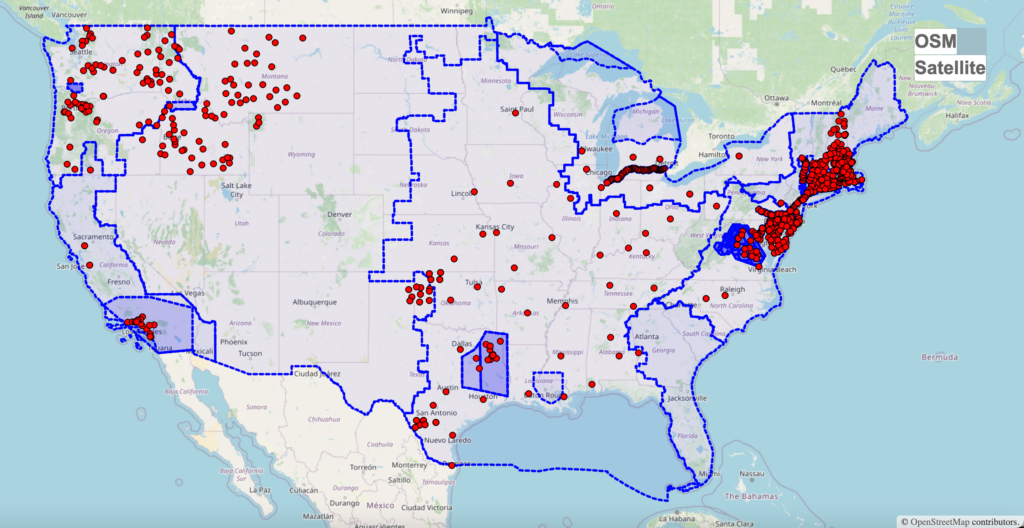
Above, AMTS stations in the United States. Below, a few detail images from the map, which can be found at https://amts.rf.band (heavy data, be patient for first load).
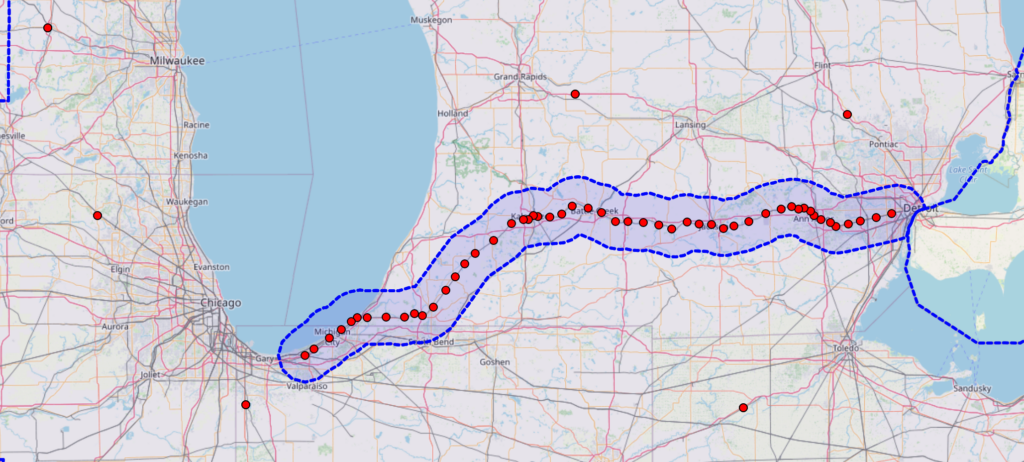
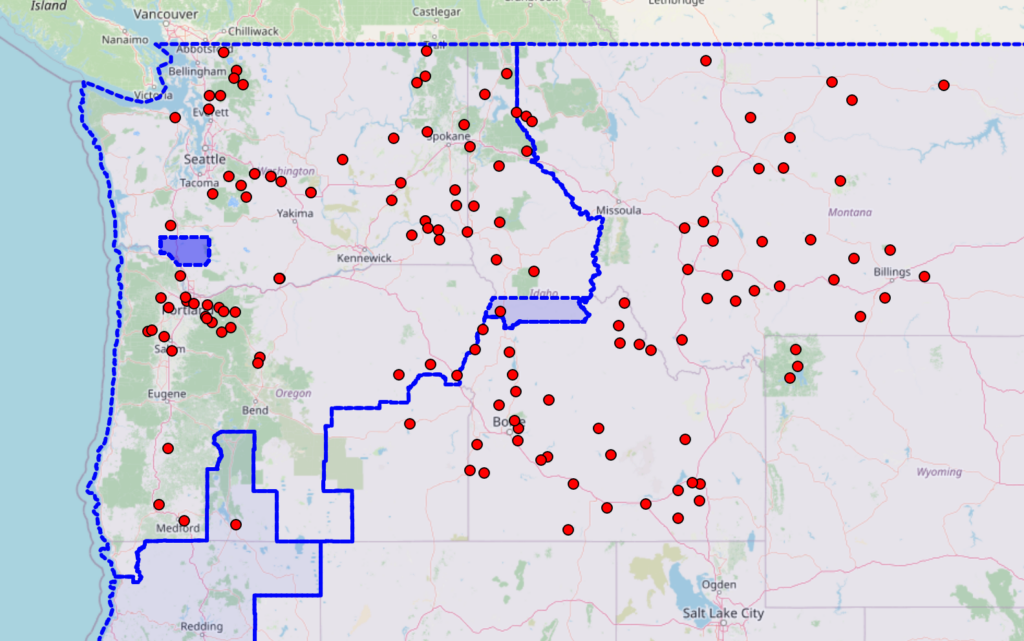

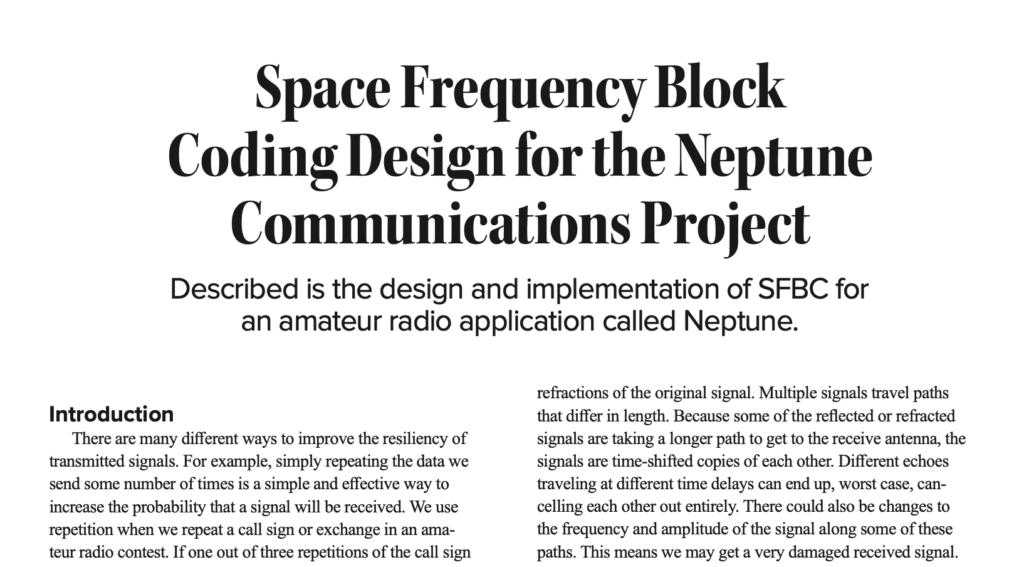
An article from ORI called “Space Frequency Block Coding Design for the Neptune Communications Project” will be in the January-February 2025 issue of QEX Magazine, from ARRL. Thank you to ARRL for publishing open source work from ORI.
Article Summary
The article discusses the design and implementation of Space Frequency Block Coding (SFBC) in the Neptune Communications Project, a digital radio initiative operating at 5 GHz for amateur radio applications.
Key Concepts and Objectives:
SFBC is a technique used in digital communications to improve signal resiliency by leveraging spatial, frequency, and coding diversity. It is commonly implemented in systems using Orthogonal Frequency Division Multiplexing (OFDM), utilizing multiple antennas for diversity. The mathematics are explained step-by-step with diagrams and equations. Noise calculations worked out in an Appendix.
Amateur Radio Application:
The Neptune project focuses on transmitting robust digital signals in noisy environments, essential for drone and aerospace communications. SFBC increases the likelihood of data recovery by mitigating multi-path interference and improving signal-to-noise ratio (SNR). An open source OFDM modem is needed in amateur radio.
Technical Details
Implementation:
SFBC transforms transmitted signal samples mathematically before sending them via two transmit antennas. Multi-path and spatial diversity enhance signal integrity against environmental reflections and interference.
Operation:
Signals are transmitted using OFDM, where subcarriers provide frequency diversity. The encoding does not increase throughput on its own but makes it easier to achieve maximum throughput performance.
Coding techniques like the Alamouti scheme are explained, with diagrams, for creating and decoding signals.
Trade-offs:
SFBC reduces SNR by 3 dB compared to optimal techniques like Maximum Ratio Combining but avoids the need for channel state knowledge at the transmitter.
Practical Implementation:
SFBC was modeled and tested in MATLAB/Simulink, with plans for FPGA and ASIC implementations.
Future work includes:
Expanding to Space Time Block Coding (STBC).
Live demonstrations of SFBC/STBC performance differences.
Open-source release of HDL source code for hardware implementations.
Call to Action:
The Neptune project is a volunteer-driven, open-source initiative under the Open Research Institute (ORI). Community participation is encouraged, providing educational and developmental opportunities in digital communication technologies.

Watch Dr. Marks explain the RFBitBanger project and the SCAMP protocol in this video at https://www.youtube.com/watch?v=Fbgs_4QsKnE
And then… let us tell you that SCAMP is now in FLDigi!
SCAMP is now even easier to use. If you want to get involved with this new mode and also build your skills with a very special low power HF radio kit, please visit our eBay listing for kits at https://www.ebay.com/itm/364783754396
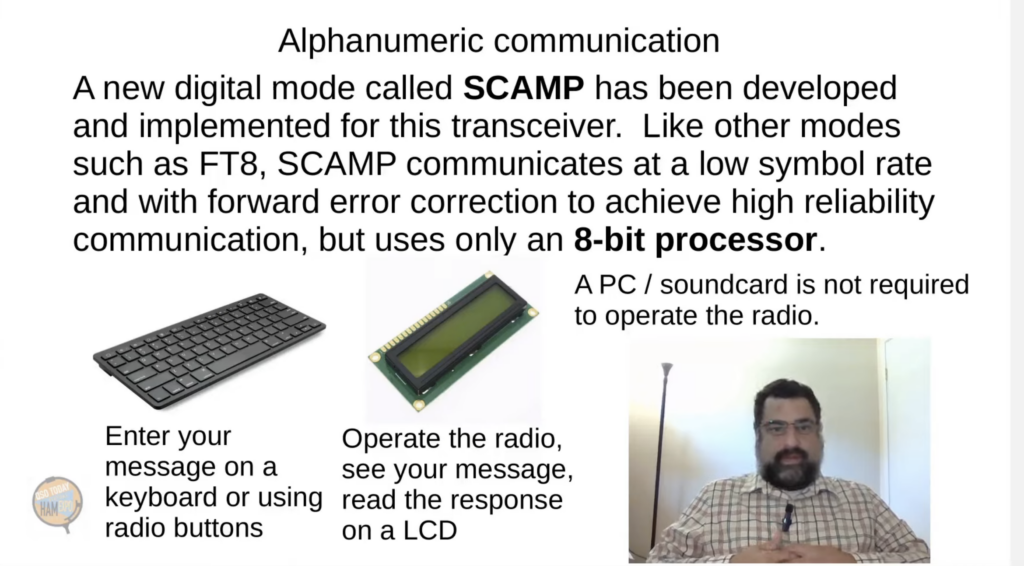
A Tale of Troubleshooting
Problem Solving our Minimum Shift Keying Implementation in the Lab
by Team OPV
Minimum shift keying (MSK) is the modulation used by Opulent Voice, our open source uplink protocol for our space and terrestrial transceiver. Unlike some other modulations, there aren’t a lot of documented and working examples of MSK, despite the many advantages of using this modulation for space and terrestrial channels. One of our educational goals at ORI is to provide exactly that, a documented and working example of MSK, that also delivers useful functionality to the amateur radio satellite service.
In the process of writing down a description of what happens mathematically, so that software defined radios like the PLUTO SDR can transmit and receive our Opulent Voice protocol, there’s been quite a few troubleshooting sessions. One session solved a problem where the main lobe bandwidth was too large. Another session solved a problem where the processor side code didn’t properly configure the radio chip. Another session switched to the correct version of LibIIO, or Library of Industrial Input and Ouput routines. The wrong library meant that the radio was “sort of” working, but not completely.
Troubleshooting and debugging systems is where most volunteer engineering time is spent. This is no different from professional development, where blank-paper time spent writing down routines may be a small fraction of the total development time of a project.
It can take multiple attempts to solve a problem. When this happens, it’s important to back up completely and recheck basic assumptions. Looking at the images below, one can see the desired MSK spectrum at the top. On the bottom is an example of an undesirable spectrum. The main lobe is bifurcated and the sidelobes have extra power. If you look at the graph, you can see that the sidelobes are higher in the “bad” example than they are in the “good” example. These are all clues, and there are several ways to go about attempting to solve the problem. The bad or “split” spectrum seemed to show up at random times, but it would go away when new PI controller gain pairs were written to the radio.
Why were we writing new proportional and integral gains to the radio? We were trying to tune our PI Filter, which is in the Costas Loop, which is in charge of tracking the frequency and phase of our signal so we can demodulate and decode successfully. We wrote code to search through proportional and integral gain pairs, testing their performance both in digital loopback and in loopback over the air.
After reviewing the code, asking for help, getting a variety of good advice, and trying to duplicate the problem in MATLAB, the problem unexpectedly went away when the processor side code was updated to remove extra writes to MSK block configuration registers.
The lessons learned?
* Clean code that matches the design of the hardware may prevent unexpected behavior. Don’t be sloppy with your test code!
* Keep up to date on changes in register accesses and behavior. There was a change from setting and clearing a bit in a register to the bit being toggled. This was a change from the level being important to the change in the level being important. Do your best to match what’s in the hardware!
Below, the “bad” spectrum as observed in the lab.

Below, the “good” spectrum, which returned after what we thought were unrelated code changes.

Opulent Voice at University of Puerto Rico
An Educational Success Story
by Michelle Thompson W5NYV with Oscar Resto KP4RF
Oscar Resto is an Instrumentation Specialist at the University of Puerto Rico’s Department of Physics. He also serves as the Principal Investigator for the university’s RockSat-X program. RockSat-X is a highly-regarded and very successful educational program sponsored by NASA and the Colorado Space Grant Consortium at the University of Colorado at Boulder. RockSat-X offers university and community college teams the opportunity to develop experiments for suborbital rocket flights, fostering innovation and practical experience in space-related fields.
Beyond his academic roles, Oscar is active in the amateur radio community, holding the call sign KP4RF. He has been involved in initiatives such as renewing the Memorandum of Understanding between the ARRL Puerto Rico Section and the American Red Cross Puerto Rico Chapter and has presented to a wide variety of audiences about amateur radio and emergency communications during and after major hurricanes.
The University of Puerto Rico has actively participated in NASA’s RockSat-X program since 2011, providing students with hands-on experience in designing, fabricating, testing, and conducting experiments for spaceflight. UPR’s RockSat-X team has developed increasingly complex experiments over the years. In 2011, UPR’s inaugural RockSat-X project utilized mass spectrometry to analyze atmospheric particles and pressure. Subsequent payloads have continued to evolve and refine the investigation of the “middle atmosphere”, an often-overlooked layer in atmospheric studies.
Oscar’s engineering design philosophy is to put the program in the hands of the students. The students are fully involved from the beginning of the process until launch. Oscar supports and enables consistent student success in two ways. First, by using the Socratic method of asking questions to lead the students through the many stages of design, test, documentation, and build. Second, by communicating clear expecatations about process and deadlines. Students source parts, build components using a wide range of manufacturing processes, and program all of the control and embedded devices. They carry out testing at the component, module, and end-to-end systems level. The student interface with NASA through meetings and regular reports.
Recent missions included deploying sterilized collection systems into the space environment to gather organic molecules, such as amino acids, proteins, and DNA, from altitudes between 43 to 100 miles above Earth. To ensure the integrity of collected samples, the team implemented innovative decontamination procedures that were carried out in flight.
For the 2023 and 2024 UPR RockSat-X entry, Opulent Voice was included as a communications payload. That version was a 4-ary FSK modulation, voice only, and ran on a general-purpose processor. In 2023, the rocket experienced a failure. In 2024, the mission was a complete success, with Opulent Voice received on a student-built and crewed portable station near the launch site. For 2025, assuming UPR’s RockSat-X application is accepted by NASA, the Minimum Shift Key (MSK) version of Opulent Voice, implemented on an FPGA and deployed on a PLUTO SDR, will be used by the student build team. This MSK version is much more advanced and more spectrally efficient.
Review the MSK version at https://github.com/OpenResearchInstitute/pluto_msk
See an image of the student poster presentation about the 2024 UPR RockSat-X project below.
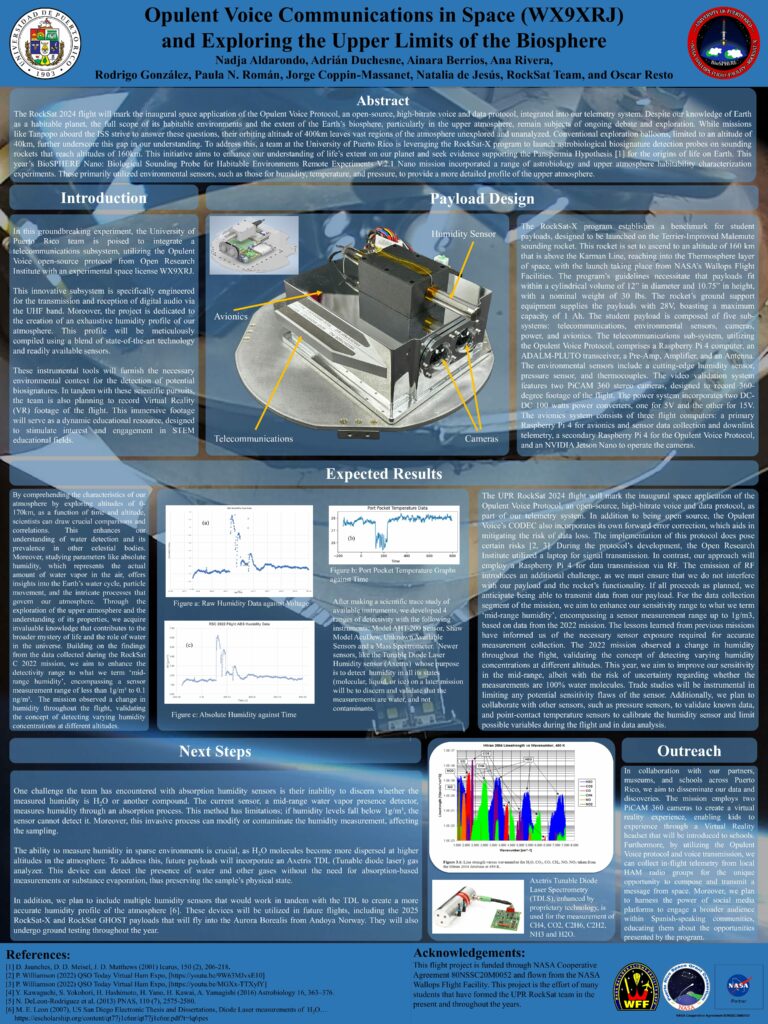
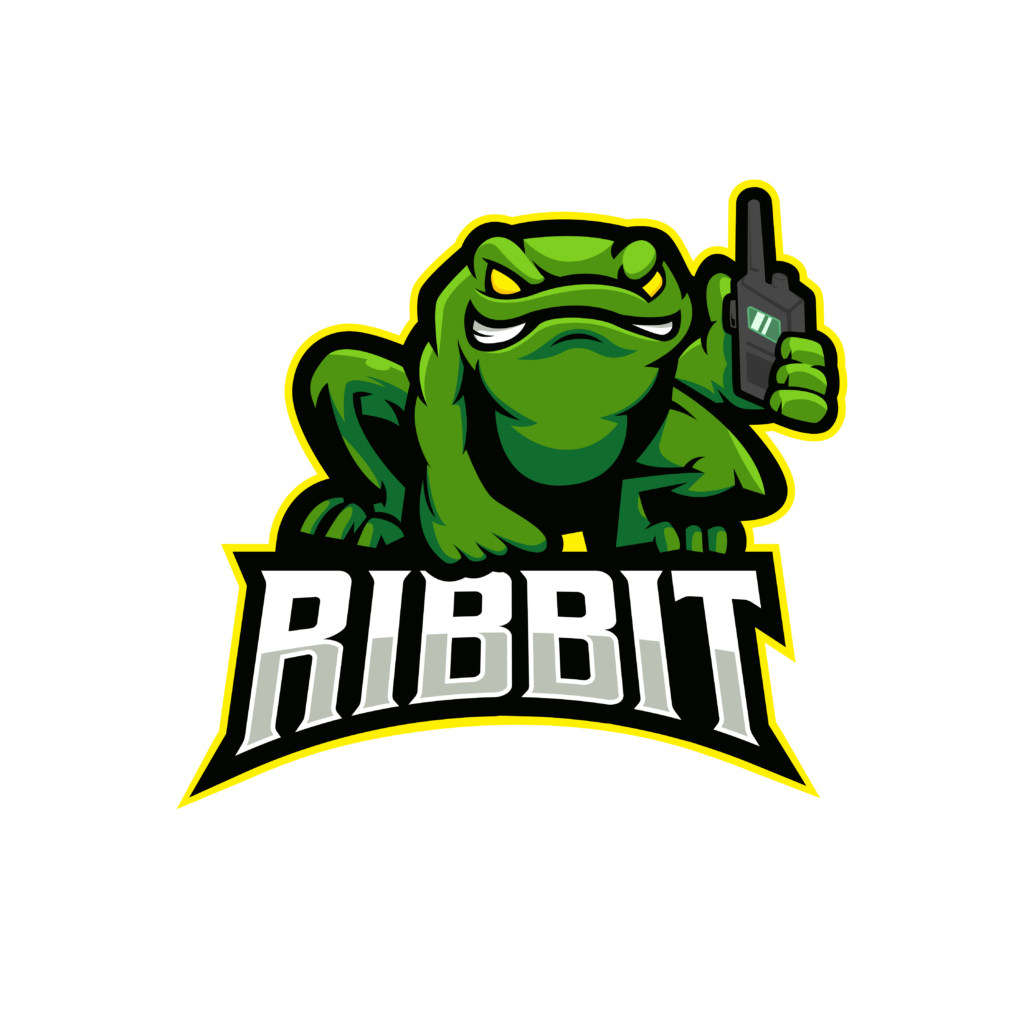
Shipment was delayed, but a nice surprise for Ribbit has finally arrived. Below is the plaque for Ribbit’s 2023 Technical Innovation Award.
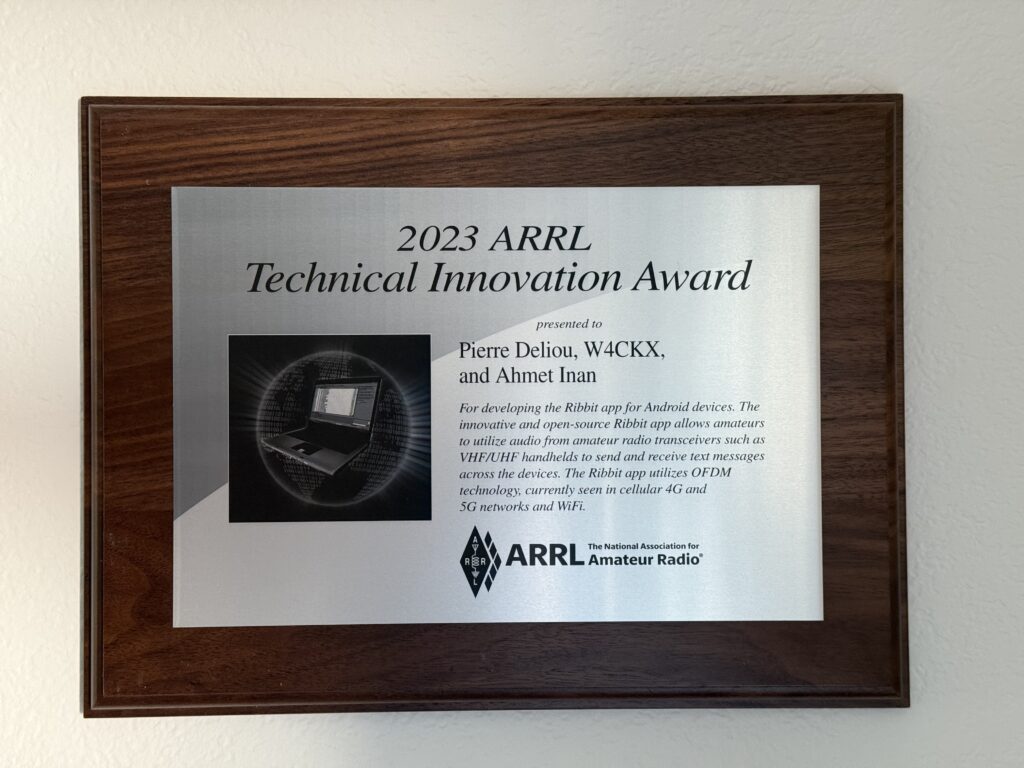
The metal surface has black lettering and an image of a laptop computer. The body of the plaque is a handsome hardwood.
The text reads “For developing the Ribbit app for Android and iOS devices. The innovative and open-source Ribbit app allows amateurs to utilize audio from amateur radio transceivers such as VHF/UHF handhelds to send and receive text messages across the devices. The Ribbit app leverages OFDM technology currently used in cellular 4G and 5G networks & WiFi.”
Below, the plaque hanging on the wall in Remote Lab West.
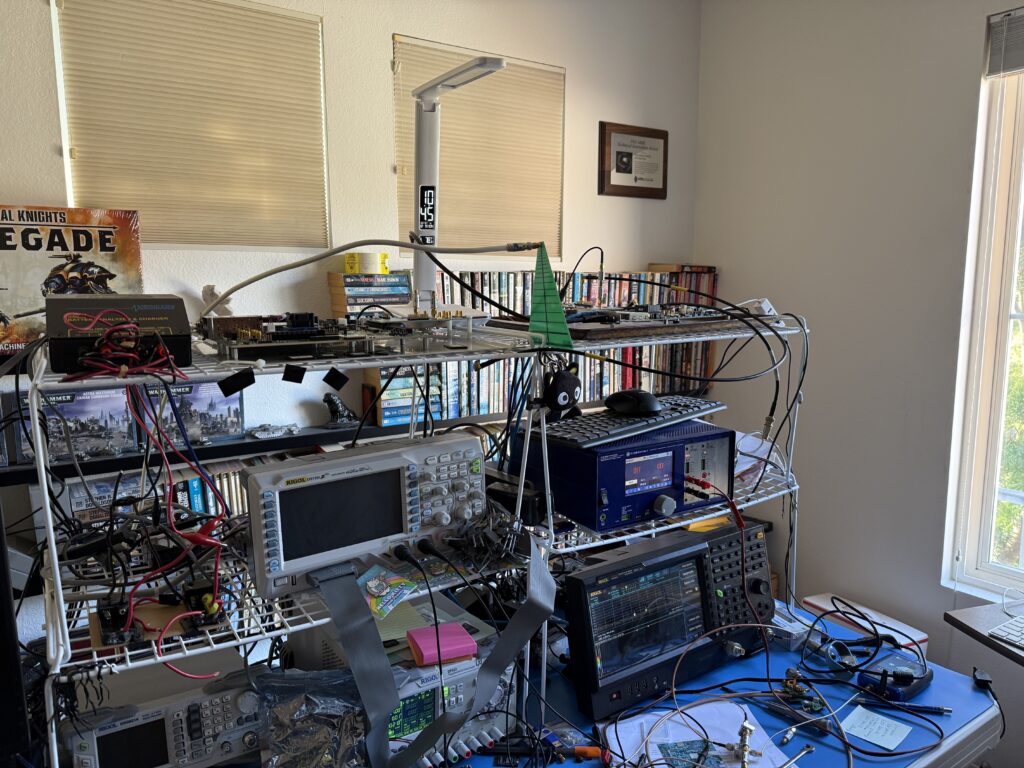
Remote Labs are test benches with spectrum analyzers, oscilloscopes, power and frequency meters, FPGA development stations, power supplies, and multiple SDRs. The equipment is supported by a computer running virtual machines with a variety of operating systems to support software, firmware, and hardware development. Remote Labs are available 24 hours a day, 365 days a year for open source development.
Thank you to Pierre and Ahmet for all the extremely hard work to make Ribbit so successful!
Learn more about Ribbit and try out the web app at https://www.ribbitradio.org
Geometry Puzzle
Given a 3, 4, 5 right triangle, with an inscribed semi-circle, where the hypotenuse of the triangle bisects the circle to form this semi-circle, find the area of this semi-circle.
Spoiler! The worked-out solution by Paul Williamson KB5MU is below.
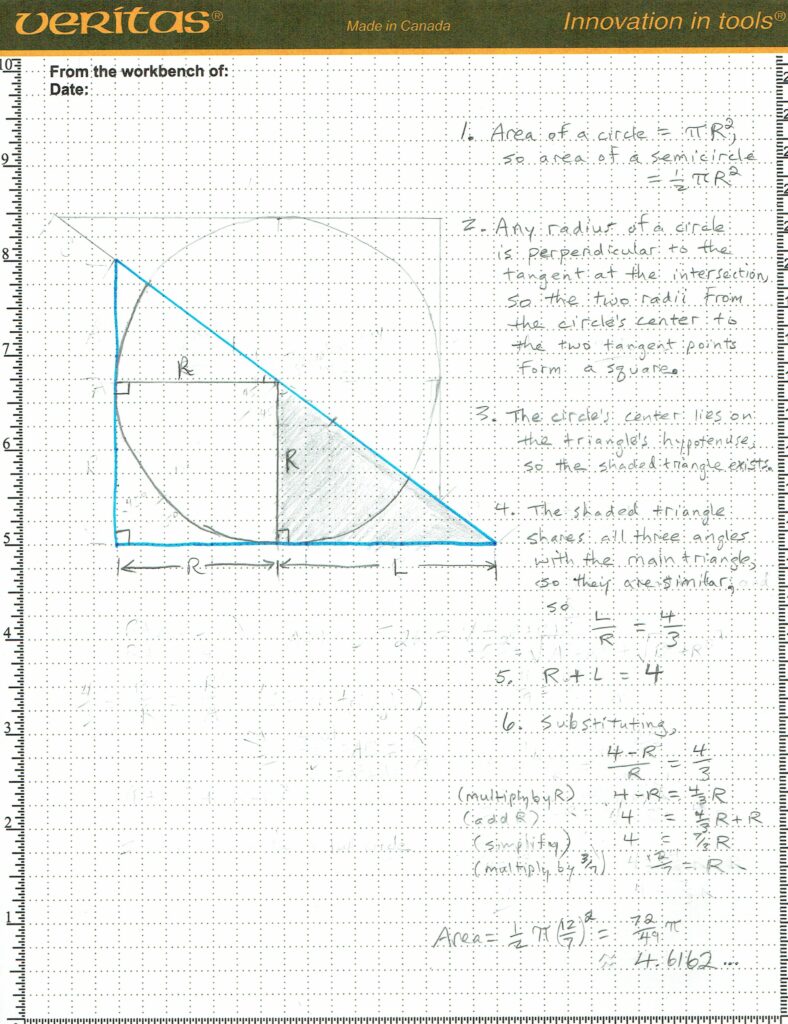
The Inner Circle Sphere of Activity
December 17-22 2024 – Open Research Institute participates on the Federal Communication Commission’s Technological Advisory Council (TAC). Working groups composed of volunteers from industry, academia, and open source (ORI) meet weekly and debate and deliver advice to the FCC quarterly. This hybrid meeting is streamed on the FCC website.
December 31, 2024 – Fiscal year ends for Open Research Institute. Work begins on filing 2024 IRS 990 returns, which are due May 15, 2025.
December 20, 2024 through January 6, 2025 – Holiday Break for all labs and teams.
March 6, 2025 – Open Research Institute celebrates another birthday with parties planned so far in the US, Canada, and Europe. Sign up for a fun day commemorating open source volunteers around the world by writing hello@openresearch.institute.
Thank you to all who support our work! We certainly couldn’t do it without you.
Anshul Makkar, Director ORI
Frank Brickle, Director ORI
Keith Wheeler, Secretary ORI
Steve Conklin, CFO ORI
Michelle Thompson, CEO ORI
Matthew Wishek, Director ORI
